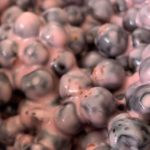Teachers
Recently added
Lesson Plan
K-6, 1.0-2.3
Inuktitut, Social Studies
Nunaga
Educational activity guide for the short film Nunaga ᓄᓇᒐ: ᐅᓂᒃᑲᐅᑏᑦ ᐃᑳᓯᒪᔪᑦ, My Earth: Crossed Stories.
Professional development
K-6, 1.0-2.3
Information and Communication Technologies
Microsoft Teams
Get started with Microsoft Teams
Professional development
Information and Communication Technologies
Technology Resources at KI
Understand the role of different people and departments who can support you with technologies.
Professional development
K-6
Information and Communication Technologies
Using iPads in the Classroom
Best Practices for Using iPads in Classrooms: A Guide for Teachers
Professional development
K-6, 1.0-2.3
Information and Communication Technologies
Sound-field Systems in Our Schools
Promote inclusivity in the classroom by ensuring that all students have equal access to the…
Professional development
5, 6, 1.0-2.3
Information and Communication Technologies
Teach with Word Q
Learn about WordQ and how you can use it to support learning in your classroom.
Inuktitut Grammar
Reference document
K-6, 1.0-2.3
Inuktitut
Basic Sounds of Inuktitut
Rule 1: Presentation of the Inuktitut vowels and consonants
Reference document
K-6, 1.0-2.3
Inuktitut
Sequences of Vowels
Rule 2: No more than two vowels can appear in a row.
Reference document
K-6, 1.0-2.3
Inuktitut
Sequences of Consonants
Rule 3: No more than two consonants can appear in a row.
Reference document
K-6, 1.0-2.3
Inuktitut
First and Last Sound of a Word
Rule 4: With few exceptions, a word may only begin with one of the following…
Reference document
K-6, 1.0-2.3
Inuktitut
Consonant Groups Within a Word
Rule 5: No group of two consonants can follow another group of two consonants in…
Reference document
K-6, 1.0-2.3
Inuktitut
Standard Orthography
Rule 6: Introduction to alphabetic (qaliujaarpait) and syllabic (qaniujaarpait) orthography.
Reference document
K-6, 1.0-2.3
Inuktitut
Teaching Literacy
Rule 7: We recommend that a synthetic method be used from the start.
Reference document
K-6, 1.0-2.3
Inuktitut
Words
Rule 8: A word, any word, combines a number of basic sounds in order to…
Reference document
Inuktitut
Word Categories
Rule 9: Inuktitut words can be classified to their grammatical properties.
Reference document
Inuktitut
Shared Properties of Nouns and Verbs
Rule 10: What makes a noun a noun is that is contains a noun ending.…
Reference document
K-6, 1.0-2.3
Inuktitut
Deep form of Chunks
Rule 11: When a chunk occurs in a given word, it has a concrete form…
Reference document
Inuktitut
Truncating and Additive Chunks
Rule 12: All chunks except bases are either truncating or additive.
Reference document
Inuktitut
Softenings
Rule 13: The initial p or t of some additive chunks softens into v or…
Reference document
K-6, 1.0-2.3
Inuktitut
Assimilation Rules
Rule 14: Assimilation is the process by which two nearby sounds become more similar to…
Reference document
Inuktitut
Reduction of Vowel and Consonant Groups
Rule 15: Processes occurring when two vowels or two consonants appear in a row.
Reference document
Inuktitut
Special Deletion of a Consonant
Rule 16: What to do when an additive noun beginning with a consonant plus a…
Reference document
Inuktitut
Rule of Double Consonants
Rule 17: When building a word, after all other rules have applied, if a group…
Reference document
Inuktitut
Properties of Noun Endings
Rule 18: All noun endings express case and number. Noun endings can also express possessor.
Reference document
Inuktitut
Non-Possessive Endings
Rule 19: Table of non-possessive noun endings.
Reference document
Inuktitut
Properties of Verb Endings
Rule 21: All verb endings express mood and subject person. Verb endings can also express…
Reference document
Inuktitut
One-Person Verb Endings
Rule 22: A list of possible one-person verb endings.
Reference document
K-6, 1.0-2.3
Inuktitut
Two-Person Verb Endings
Rule 23: List of possible two-person verb endings
Reference document
Inuktitut
Internal Structure of Nouns and Verbs
Rule 24: Understanding the internal structure of nouns and verbs
Reference document
K-6, 1.0-2.3
Inuktitut
Grammatical Groups of Verb Bases
Rule 25: It is a fact that both types of endings cannot be freely added…
Reference document
K-6, 1.0-2.3
Inuktitut
Grammatical Groups of Verb Makers
Rule 26: Verb makers and their grammatical groups.
Reference document
Inuktitut
Grammatical Groups of Verb Extenders
Rule 27: The majority of verb extenders are neutral with respect to the five groups…
Reference document
K-6, 1.0-2.3
Inuktitut
Grammatical Groups of Noun Makers
Rule 28: Some noun makers are added to verb stems that can take a one-person…
Reference document
K-6, 1.0-2.3
Inuktitut
Branching Structures
Rule 29: Additional branching structures to help visualize grammatical relations.
Reference document
Inuktitut
Productive Versus Non-Productive Postbase
Rule 30: Distinction between productive and non-productive postbase
Reference document
Inuktitut
Common Productive Postbases in Nunavimmiutitut
Rule 31: A list of common productive postbases
Reference document
K-6, 1.0-2.3
Inuktitut
Exclamative Endings
Rule 33: There are two frequent exclamative endings in Nunavik Inuktitut. They are peculiar because…
Reference document
Inuktitut
Demonstrative Pronouns
Rule 34: Demonstrative pronouns serve to point out the persons or things spoken of. They…
Reference document
Inuktitut
Locative Pronouns
Rule 35: Locative pronouns refer to the location where the process expressed by the verb…
Reference document
Inuktitut
Interrogative Pronouns
Rule 37: Interrogative pronouns are not a homogeneous group. Only suna and kina can occur…
Reference document
Inuktitut
Indefinite Pronouns
Rule 38: There are two main kinds of indefinite pronouns in Inuktitut: ‘free-choice’ pronouns and…
Reference document
Inuktitut
Reflexive Pronouns
Rule 39: Only three forms of one reflexive pronoun are used nowadays in Nunavik.
Reference document
Inuktitut
Particles
Rule 40: Particles are usually small words. They express neither a case nor a mood.
Professional Development
Professional development
K-6, 1.0-2.3
Information and Communication Technologies
Microsoft Teams
Get started with Microsoft Teams
Professional development
Information and Communication Technologies
Technology Resources at KI
Understand the role of different people and departments who can support you with technologies.
Professional development
K-6
Information and Communication Technologies
Using iPads in the Classroom
Best Practices for Using iPads in Classrooms: A Guide for Teachers
Professional development
K-6, 1.0-2.3
Information and Communication Technologies
Sound-field Systems in Our Schools
Promote inclusivity in the classroom by ensuring that all students have equal access to the…
Professional development
5, 6, 1.0-2.3
Information and Communication Technologies
Teach with Word Q
Learn about WordQ and how you can use it to support learning in your classroom.
Professional development
Information and Communication Technologies
Connect Wirelessly to the SMART Board
Step-by-step procedure for connecting a device (smartphone, tablet or laptop) wirelessly to the SMART Board.
Professional development
3-6
Social Studies
Social Studies Lesson Plan
A planning activity to learn how to use the primary program.
Professional development
K-6, 1.0-2.3
Information and Communication Technologies
Instructions and Demonstrations
Three approaches to explain and demonstrate a computer-based task.
Featured Theme: Food
Reference document
K-6, 1.0-2.3
Culture and Land Survival, Inuktitut, Sciences
Sea and Seashore Creatures
An Inuktitut document to learn about sea and seashore creatures.
Reference document
K-6, 1.0-2.3
Health and Wellbeing
Nutrition and Hydration
Engage in self-care by establishing healthy eating and drinking habits.
Reference document
K-6, 1.0-1.2
Sciences
Berry Plants Poster
An Arctic Net Poster to bring research on berries into the classroom
Lesson Plan
1-4
Sciences
Arctic Char Anatomy
Learn Inuktitut words to describe the anatomy of the Arctic Char
Books
What we are watching
Multimedia, Website
K-6, 1.0-1.2
Sciences
Science Please!
A Canadian National Film Board collection of science videos
Multimedia
1.0-2.3
Physical Education and Health
30 Day Exercise Challenge
Daily home exercise videos created by Nunavik Volleyball
Multimedia
K-6, 1.0-2.3
Health and Wellbeing, Inuktitut
Quviasuppunga
A compilation of Nunavimmiut interpreting Charlie Adams’ song
Multimedia
K-6, 1.0-2.3
Arts, Career and Community Development, Inuktitut, Social Studies
Taqramiut Nipingat
Nunavik television network operated by Taqramiut Nipingat
Multimedia
K-6, 1.0-2.3
Health and Wellbeing
Aliasutta-Be Happy
This song is to encourage perseverance to Nunavik Youth and to all!


